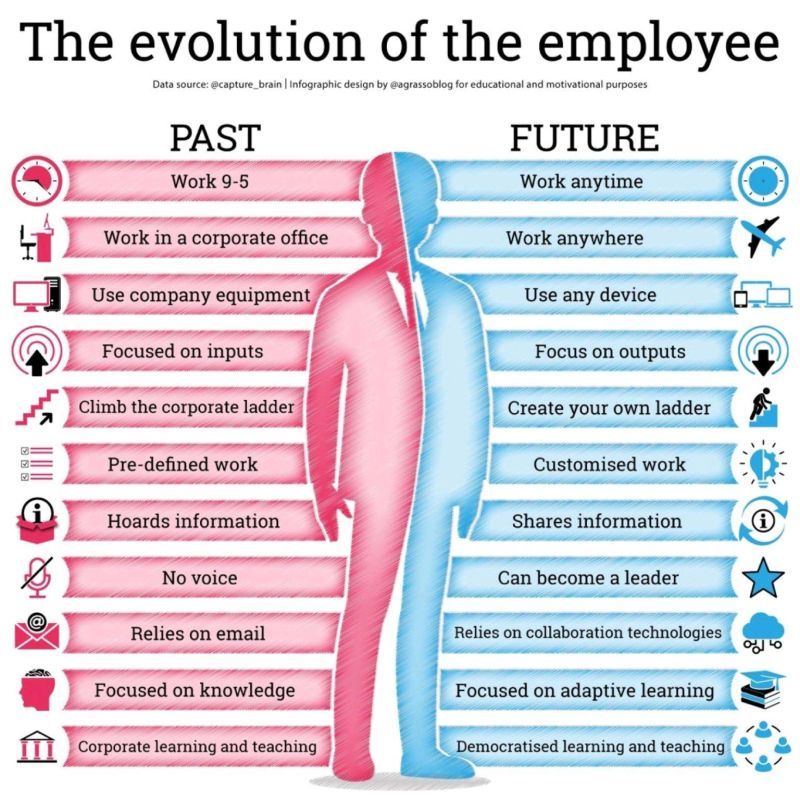Picture this: it’s the year 2024, and the world has finally emerged from the grip of the devastating pandemic. As people slowly return to the workplace, one aspect that has forever changed is the way remote workers and time employees work. Remote work, once seen as a temporary solution in an office setting, has become deeply ingrained in the professional lives of full-time workers due to technological advancements.
In this post-pandemic era, companies in an office setting are reevaluating their approach to hiring and remote work. Managers are considering how to adapt their company to the changing times. Remote workers have witnessed firsthand the benefits of improved work – increased productivity, cost savings, and access to a global talent pool. These advantages have made remote jobs highly sought after, as they allow individuals to utilize their skills in a flexible and location-independent manner. However, managers also grapple with new challenges such as team collaboration with remote workers, employee engagement in remote jobs, and maintaining work-life balance for employees with remote skills.
The future of remote work holds exciting opportunities for workers in various jobs, thanks to technological advancements. However, these advancements also raise perplexing questions about the skills workers need to succeed. How will companies and managers strike a balance between flexibility and structure in the remote work experiment? With the shift to remote work, it is important for companies to create effective work arenas that cater to the needs of employees in their jobs. What role will technology play in fostering seamless communication? Join us as we delve into these post-pandemic predictions for remote jobs. Explore how covid has impacted workers and the skills needed in this new landscape.
Current State of Remote Work
Remote work has become the norm for many workers during the covid pandemic. Many employees have transitioned to remote jobs, with companies actively hiring for remote positions. With the rapid spread of COVID-19, companies had to quickly adapt to remote work practices to ensure the safety and well-being of their workers and protect jobs. This shift in jobs and workers was not without its challenges, but technology has played a crucial role in enabling remote work during the COVID-19 pandemic. Skills have been essential for adapting to this new way of working.
Remote Work as the New Normal
The covid pandemic forced businesses worldwide to embrace remote work on an unprecedented scale, affecting jobs, workers, and occupations. Employees who were accustomed to commuting to traditional office settings suddenly found themselves setting up home offices and attending virtual meetings due to the COVID-19 pandemic. This shift allowed for the rise of remote workers and transformed the way jobs and occupations were conducted. This transition presented both advantages and disadvantages.
One advantage is the flexibility that remote work offers. Remote workers have more control over their schedules, allowing them to achieve a better work-life balance in their jobs and occupations, especially during the COVID pandemic. Remote workers can avoid rush hour traffic, spend more time with family, or pursue personal hobbies during breaks. These benefits make remote jobs and occupations appealing to many individuals participating in the remote work experiment. Remote work eliminates geographical barriers, enabling companies to hire workers from anywhere in the world for various occupations.

However, there are also challenges associated with remote work. Some remote workers may struggle with maintaining productivity while working from home due to distractions or lack of structure. Communication can be more challenging when remote workers are not physically present together. This is especially true during a remote work experiment where team members are spread across different work arenas. Regular check-ins and clear communication channels are essential for effective collaboration among remote workers.
The Role of Technology in Enabling Remote Work
Technology has been instrumental in facilitating remote work during the pandemic. Video conferencing platforms like Zoom and Microsoft Teams have become indispensable tools for virtual meetings and team collaborations. Cloud-based file-sharing systems such as Google Drive and Dropbox allow seamless access to documents from anywhere.
Moreover, project management tools like Trello or Asana help teams stay organized and track progress on tasks remotely. Instant messaging apps like Slack enable quick communication between team members, fostering real-time collaboration even when physically apart.
Future Predictions for Remote Work
As we look ahead post-pandemic, it is evident that remote work will continue to shape the future of employment. Many companies have realized the benefits of remote work and are considering implementing it as a permanent or part-time option for their employees.
Some predictions for the future of remote work include:
-
Increased flexibility: Companies may offer more flexible work arrangements, allowing employees to choose between working remotely and in-office.
-
Hybrid models: A combination of remote and in-person work may become the norm, with employees spending part of their time at the office and part working from home.
-
United States leading the way: The United States is likely to see a significant increase in remote work opportunities, with more companies adopting this model.
-
Regular check-ins and communication: To ensure effective collaboration, regular check-ins and open lines of communication will be essential for remote teams.
Trends and Predictions for the Future of Remote Work
The future of remote work is looking bright, with several trends and predictions emerging in a post-pandemic world. As companies adapt to the new normal, hybrid work models will become more prevalent, offering a combination of in-person and remote work. This flexible approach allows employees to enjoy the best of both worlds, promoting collaboration while maintaining the benefits of remote work.
Hybrid Work Models: The Best of Both Worlds

Hybrid work models are gaining popularity as they offer flexibility and balance. Employees can divide their time between working remotely and coming into the office, creating a dynamic work environment. With this model, teams can collaborate effectively during in-person meetings while still enjoying the freedom and autonomy that comes with remote work.
Pros:
-
Increased flexibility for employees
-
Enhanced collaboration during in-person meetings
-
Improved work-life balance
Cons:
-
Potential challenges in coordinating schedules
-
Communication gaps between remote and in-office workers
Evolving Virtual Collaboration Tools
Virtual collaboration tools have played a crucial role during the pandemic, enabling teams to stay connected despite physical distance. As we look towards the future, these tools will continue to evolve and improve, providing even better virtual meeting experiences. From video conferencing platforms to project management software, advancements in technology will enhance communication and productivity for remote teams.
Pros:
-
Seamless virtual meetings with high-quality audio and video
-
Real-time collaboration on shared documents and projects
-
Integration with other productivity tools for streamlined workflows
Cons:
-
Technical difficulties or connectivity issues
-
Learning curve for adopting new tools or features
Flexibility as a Key Factor

In a post-pandemic world, flexibility will be a key factor in attracting and retaining talent. Many employees have experienced the benefits of remote work firsthand – from saving time on commuting to achieving better work-life balance. As companies compete for top talent, offering flexible work arrangements will be essential.
Pros:
-
Increased job satisfaction and employee morale
-
Access to a wider pool of talent from different locations
-
Cost savings for both employees and employers
Cons:
-
Potential challenges in maintaining work-life boundaries
-
The need for clear communication and expectations
As we navigate the future of remote work, it’s important to embrace these trends and predictions. Hybrid work models, evolving virtual collaboration tools, and flexibility will shape the way we work moving forward. By adapting to these changes, companies can create a productive and engaging work environment that attracts top talent while empowering employees to thrive in their roles.
Increasing Demand for Remote Work Tools
The future of remote work post-pandemic is shaping up to be a tech-driven landscape, with an increasing demand for various digital tools and technologies. Let’s explore some of the key areas where this demand is expected to rise.
Video Conferencing Tools
Video conferencing platforms like Zoom and Microsoft Teams have become essential for remote collaboration and communication. As more companies embrace remote work, the need for seamless video meetings and virtual conferences will continue to grow. These tools not only enable face-to-face interactions but also facilitate screen sharing, file sharing, and real-time collaboration. They bridge the gap between remote teams, making it easier to connect and collaborate regardless of location.
Project Management Software
Coordinating tasks and managing projects remotely can be challenging without the right tools. That’s where project management software comes in. Platforms like Trello and Asana provide a centralized hub for teams to assign tasks, track progress, set deadlines, and communicate effectively. These tools enhance productivity by keeping everyone on the same page and ensuring that projects stay organized even when team members are working from different locations.
Cybersecurity Software
With an increase in remote work comes an increased risk of cyber threats. Companies need robust cybersecurity measures to protect their sensitive data and ensure secure communication channels. The demand for cybersecurity software will surge as organizations prioritize safeguarding their networks from potential breaches or attacks. From VPNs (Virtual Private Networks) to encrypted messaging apps, these tools play a crucial role in maintaining data privacy while working remotely.
Technological Advancements
As remote work becomes more prevalent, technological advancements will continue to shape its future. From improved internet connectivity options to innovative automation solutions, new technologies will revolutionize how we work remotely. For example, advancements in artificial intelligence (AI) may streamline repetitive tasks or enhance virtual job interviews through automated screening processes.
Upwork: A Booming Freelance Marketplace
The rise of remote work has also led to a surge in freelance opportunities. Platforms like Upwork connect businesses with skilled professionals from around the world, enabling companies to tap into a global talent pool. This trend is expected to continue as companies realize the benefits of hiring freelancers for specific projects or tasks, offering flexibility and cost-effectiveness.
Reshaping Work After the Pandemic: Broad Trends

Prioritizing Employee Well-Being and Mental Health Support
In the future of remote work post-pandemic, companies will place a greater emphasis on employee well-being and mental health support. The global health crisis has brought to light the importance of taking care of employees’ overall well-being, not just their physical health. Employers are recognizing that maintaining a healthy work-life balance is crucial for productivity and job satisfaction.
Pros:
-
Employees will feel more valued and supported in their personal and professional lives.
-
Increased focus on mental health can lead to higher levels of employee engagement and retention.
Cons:
-
Implementing comprehensive well-being programs may require additional resources and investment from companies.
-
Balancing employees’ needs with business objectives could present challenges for some organizations.
Redesigning Office Spaces for Hybrid Working Arrangements
As remote work becomes a more permanent fixture in our professional lives, office spaces may undergo significant redesigns to accommodate hybrid working arrangements. Companies will need to create flexible environments that cater to both in-person collaboration and individual focused work. This might involve reconfiguring office layouts, incorporating technology-enabled meeting spaces, and providing amenities that enhance the overall employee experience.
Pros:
-
Hybrid workplaces can foster creativity, collaboration, and innovation by combining the benefits of remote work with face-to-face interactions.
-
Redesigned office spaces can help strengthen company culture by providing opportunities for team building and social connections.
Cons:
-
Redesigning office spaces can be costly, especially for smaller businesses or startups with limited resources.
-
Adapting to new office layouts may require employees to adjust their routines and adapt to new ways of working.
Breaking Down Geographic Barriers for Talent Acquisition
One significant change brought about by the pandemic is the breaking down of geographic barriers. Remote work has proven that location is no longer a limiting factor for companies seeking skilled professionals. Organizations can now tap into a global talent pool and hire individuals from anywhere in the world, expanding their access to diverse skill sets and perspectives.
Pros:
-
Companies can attract top talent regardless of their physical location, leading to a more competitive workforce.
-
Hiring remote employees can potentially reduce costs associated with office space and relocation expenses.
Cons:
-
Managing remote teams spread across different time zones may require additional coordination and communication efforts.
-
Cultural differences and language barriers may present challenges when working with a geographically diverse workforce.
Cost Savings and Employer Plans for Remote Work
As we look ahead to the future of remote work post-pandemic, it’s clear that cost savings will be a significant driving factor for employers. Embracing remote work options allows businesses to save on office space costs, which can be a substantial financial advantage.
Many companies have recognized the benefits of remote work during the pandemic and plan to continue offering flexible working arrangements even after it ends. This shift in mindset is driven not only by cost savings but also by the realization that remote work can lead to increased productivity and employee satisfaction.
Employers can save on office space costs by embracing remote work options.
By allowing their employees to work remotely, employers can significantly reduce expenses related to office space. With fewer individuals physically present in the workplace, there is less need for large office buildings or expensive leases. This translates into substantial cost savings for businesses.
In addition to saving on rent or mortgage payments, companies can also cut back on other related expenses such as utilities, maintenance, and supplies. These savings can then be redirected towards other areas of the business or invested in growth opportunities.
Many companies plan to offer flexible working arrangements even after the pandemic ends.
The pandemic has forced companies worldwide to adopt remote work policies as a means of ensuring business continuity. However, this temporary measure has revealed numerous advantages that extend beyond crisis management. As a result, many employers are now considering permanent changes to their workforce structure.
Flexible working arrangements allow employees more control over their schedules and provide a better work-life balance. This newfound flexibility can boost morale and job satisfaction while reducing stress levels among workers. As a result, companies are likely to see increased employee retention rates and improved overall performance.
Employers are investing in training programs to help employees adapt to remote work.
Transitioning from traditional in-person office environments to remote work setups requires a certain level of adjustment for both employees and employers alike. To ensure a smooth transition, many companies are investing in training programs and resources to help their employees adapt to the remote work environment.
These training programs may include teaching employees how to effectively use collaboration tools, manage their time efficiently, and maintain strong communication channels with their colleagues. By providing the necessary support and resources, employers can help their workforce thrive in a remote work setting.
Worker Preferences and Benefits of Remote Work
Remote work has become the new normal, and it’s here to stay even after the pandemic. As we look into the future of remote work, it’s important to understand why employees value this flexible work arrangement and the benefits it brings.
Employees value the flexibility that comes with remote work arrangements.
One major advantage of remote work is the flexibility it offers. Remote workers have the freedom to choose where they want to work from, whether it’s their home office, a coffee shop, or even while traveling. This flexibility allows individuals to create a work environment that suits their needs and preferences.
Savings on commuting time and expenses are significant benefits of working remotely.
By eliminating the need for daily commutes, remote workers can save valuable time and money. No more rushing through traffic or waiting for crowded trains. Instead, employees can use this saved time for personal activities or even getting some extra sleep in the morning. Remote work eliminates transportation costs such as gas expenses or public transportation fees, resulting in substantial savings over time.
Better work-life balance is often cited as a major advantage of remote work.
Remote work provides an opportunity for employees to achieve a better balance between their professional and personal lives. With no fixed office hours or rigid schedules, individuals can adapt their work hours to accommodate personal commitments or take breaks when needed. This flexibility allows them to attend family events, pursue hobbies, or simply enjoy some downtime without feeling overwhelmed by traditional office constraints.
Improved job satisfaction is another notable benefit of remote work.
Many employees report higher levels of job satisfaction when given the option to work remotely. The increased autonomy and control over their own workspace contribute to a sense of empowerment and ownership over their tasks. Remote workers often feel trusted by their employers to manage their time effectively and deliver results independently.
The future holds endless possibilities for remote workers.
As we move forward post-pandemic, the work landscape will continue to evolve. Remote work opportunities will expand, offering more job options and flexibility for workers across various industries. Companies have realized the benefits of remote work, such as reduced overhead costs and access to a wider talent pool. This realization is likely to lead to an increase in remote work options and the integration of remote employees into the overall workforce.
Embracing the Future of Remote Work
As we look ahead to the post-pandemic world, it is clear that remote work is here to stay. The current state of remote work has shown us its potential and benefits, and as we move forward, it’s important for individuals and organizations alike to embrace this future. Remote work offers flexibility, increased productivity, and a better work-life balance. It allows you to break free from the confines of traditional office spaces and find your own rhythm in a more comfortable environment.
To make the most out of remote work, it’s crucial to equip yourself with the right tools and technologies that support collaboration and communication. As the demand for remote work continues to rise, there will be an increasing need for innovative solutions that enable seamless virtual interactions. By staying up-to-date with these trends and embracing new ways of working, you can position yourself at the forefront of this evolving landscape.
Now is the time to seize the opportunities presented by remote work. Take charge of your career by exploring how you can adapt your skills and expertise to thrive in a remote setting. Embrace the freedom and flexibility that comes with working remotely, but also be aware of the challenges that may arise along the way. By staying proactive, continuously learning, and leveraging technology to connect with others, you can navigate this new era of work successfully.
FAQs
Can anyone work remotely?
Yes! Remote work is not limited to specific industries or roles. With advancements in technology and communication tools, many jobs can now be done remotely. Whether you’re a writer, designer, programmer, marketer or even a teacher, there are opportunities for remote work available across various fields.
How do I stay productive while working remotely?
Maintaining productivity while working remotely requires discipline and structure. Set clear goals for each day or week, establish a dedicated workspace free from distractions, create a schedule that aligns with your natural energy levels, and take regular breaks to recharge. Using productivity tools and techniques such as time blocking, prioritization, and task management apps can help you stay focused and organized.
How can I collaborate effectively with remote team members?
Effective collaboration in a remote setting relies on clear communication and the right tools. Utilize video conferencing platforms for face-to-face interactions, instant messaging apps for quick discussions, and project management software to track progress. Establish regular check-ins with your team to ensure everyone is aligned on goals and objectives. Building trust through open and transparent communication is key to successful collaboration.
Can remote work lead to career advancement?
Absolutely! Remote work opens up opportunities for career growth by allowing you to work with diverse teams from around the world. It enables you to develop valuable skills such as self-motivation, adaptability, and strong communication abilities. By showcasing your ability to thrive in a remote environment and delivering high-quality results, you can position yourself for promotions or even explore new job prospects that offer more flexibility.
How do I maintain work-life balance while working remotely?
Maintaining a healthy work-life balance is crucial when working remotely. Set boundaries between work hours and personal time by establishing a routine that separates the two. Create physical distance from your workspace during non-working hours, prioritize self-care activities, and make time for hobbies or activities that bring you joy. Remember that achieving balance requires conscious effort and self-discipline.
